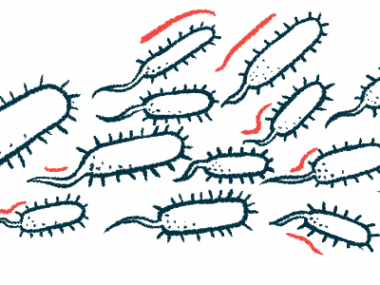Complex care for 1st reported case of CAD, ANCA-associated vasculitis
Treatment included warming up dialysis equipment, other interventions
Written by |

Managing the life-threatening consequences of a rare autoimmune condition called ANCA-associated vasculitis (AAV) can be particularly challenging when cold agglutinin disease (CAD) is also present, according to a recent case report.
In this first documented case of AAV co-occurring with CAD, scientists described how the cold temperature of the equipment used to perform dialysis for AAV-related kidney failure in a man in his 40s made CAD worse because disease-triggering antibodies are activated at cold temperatures.
Warming up the equipment, along with a range of other medications and interventions for both AAV and CAD, led to significant improvements for the patient.
‘Early and aggressive treatment may be necessary’ for coexisting conditions
“Treating these coexisting conditions can be complex due to [blood-related] complications; therefore, early and aggressive treatment may be necessary,” researchers wrote.
The case report, “Concurrent existence of cold agglutinin disease and ANCA-associated vasculitis with fulminant pulmonary-renal syndrome poses significant treatment challenges,” was published in BMJ Case Reports.
In CAD, a rare autoimmune disease, self-reactive antibodies called cold agglutinins attack the body’s red blood cells at colder temperatures, marking them for destruction (a process called hemolysis). This leads to symptoms such as anemia, where there’s reduced numbers of red blood cells needed to carry oxygen throughout the body.
In most cases of AAV, another type of self-reactive antibodies called ANCAs cause damage to the body’s small blood vessels. Left uncontrolled, AAV can lead to serious consequences including pulmonary-renal syndrome, where there is bleeding into the lungs and serious kidney disease.
CAD can have no specific cause or can occur secondary to another condition, such as infection, cancer, or another autoimmune disease. With AAV, a combination of genetic and environmental factors, including infections, are thought to contribute to the disease.
Now, a team of researchers in Germany described the case of a man in his 40s who had both CAD and AAV and whose care was complex due to the co-occurrence of the two autoimmune disorders.
“To our knowledge, the coexistence of CAD and AAV has not been described so far in the literature,” they wrote.
The man, a heavy smoker in his 40s, went to the emergency department with pain in the abdomen and lower part of the ribcage. He was also coughing up blood and had lost more than 5-6 kg (about 11-13 pounds) in the last month.
He also reported recent events of paleness in his fingers when in cold environments, a sign of CAD. He did not recall having any recent infections.
Patient sent to intensive care after CT scan shows severe inflammation in lungs
A CT scan showed a severe inflammatory form of lung injury due to bleeding into the lungs, and the man was “intubated, ventilated, and admitted to the intensive care unit,” the researchers wrote.
The patient was also found to have mild to moderate kidney damage. Blood tests showed signs of hemolysis and inflammation, and the presence of cold agglutinins and ANCAs against the myeloperoxidase enzyme, a common target of AAV-driving ANCAs.
Test results ruled out infectious diseases and cancer, as well as other possible causes for his condition. This confirmed a diagnosis of AAV and CAD, but whether CAD occurred secondary to pre-existing AAV or if both conditions arose simultaneously in response to a trigger, such as a virus, remained unclear, the team noted.
Treatment involved a number of standard immunosuppressants for AAV and dialysis for kidney disease, in which the blood goes through a device outside the body that removes extra water and waste before being delivered back into the patient.
The man also received blood transfusions for managing CAD.
Warming up dialysis tubes, solutions helped ease CAD-associated hemolysis
However, because the process of dialysis can cool the blood, CAD-associated hemolysis was exacerbated despite the blood transfusions. To address this, doctors warmed up the dialysis tubes and solutions, which helped ease the man’s CAD.
“If [dialysis] is necessary in the setting of CAD, rigorous attention must be paid to the required higher temperature of the [dialysis equipment and materials] to avoid haemolysis,” the researchers wrote.
The man was discharged from the hospital about 2.5 weeks after his admission, and he seemed to be recovering.
Some months later, the man’s CAD had stabilized, and he did not need more blood transfusions. His lung function was better, and immunosuppressive treatment was weaned. Both cold agglutinins and anti-MPO ANCAs levels returned to normal.
The only ongoing problems were related to the kidneys, where some improvements were observed but dialysis was still required.
While the warming up of the dialysis equipment seemed to help manage CAD in the patient, one of the immunosuppressants administered for AAV might have also helped, the researchers noted.
Called avacopan and sold under the brand name Tavneos, the therapy is designed to suppress the immune system’s complement cascade, which is also implicated in CAD. Also, Enjaymo (sutimlimab-jome), the only approved CAD medication, is another type of complement suppressor.
“The extent to which avacopan contributed to the favourable course of the disease remains unclear; however, it does not appear to affect the course of the disease negatively,” the researchers wrote.







